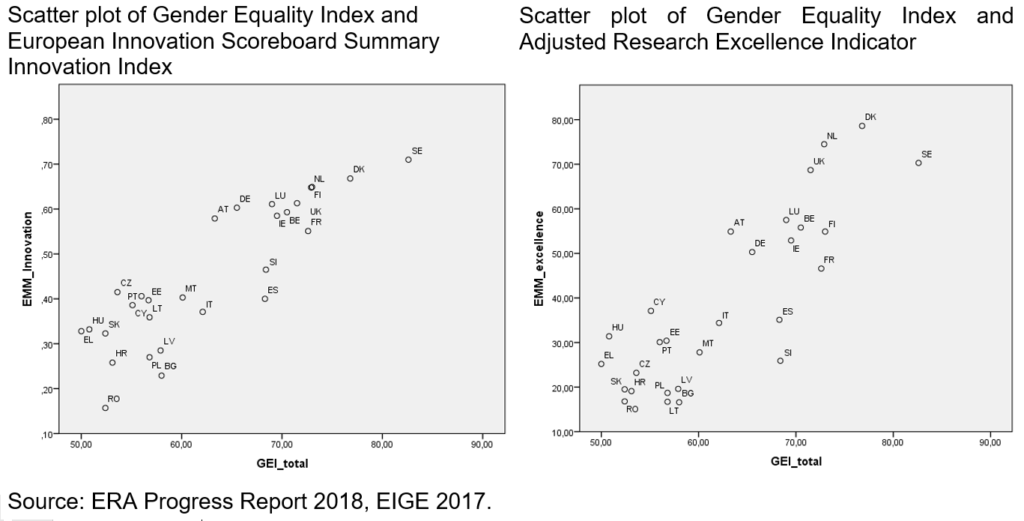Gender in ERA
5.12.2019
European Research Area (ERA) Priority 4 focuses on gender equality and gender mainstreaming in research and innovation. The objective is to foster scientific excellence and breadth of research by fully utilizing gender diversity and equality and avoiding an indefensible waste of talent. Within their National Action Plans (NAPs), European Union Member States (MS) and Associated Countries are asked to develop policies to address gender imbalances particularly at senior levels and in decision making and to strengthen the gender dimension in research.
GENDERACTION project has analyzed the implementation of the NAPS drawing on multiple data sources (results from an analysis of NAP documents, an online survey conducted in 2017 and an update of the survey in early 2019, interviews with members of the Standing Working Group Gender in R&I) and pursues a threefold aim:
1) to provide a set of indicators for monitoring NAP implementation,
2) to assess NAP implementation based on these indicators, and
3) to formulate recommendations for the next period of ERA implementation.
The analysis clearly indicates the need for further action to promote gender equality in R&I, mainly because gender equality is highly correlated with a country innovation potential and excellence. No country can afford to ignore this innovative force.

State of Implementation of the NAPs
The analysis shows that 26 of the 28 EU Member States participated in the ERA process by submitting and implementing a National Action Plan (NAP). For several countries, the ERA Roadmap was the initial spark that triggered the development of their first-ever gender equality strategy for R&I (e.g. Cyprus, Luxembourg or Malta). In others, the NAP was used to consolidate and further develop existing policies that support gender equality in R&I. However, not all countries used the NAP to establish gender equality policies or to further develop the existing ones. Consequently, it is necessary to strengthen the NAPs as a steering instrument for gender equality in R&I. Meaningful monitoring would support such a steering function of the NAPs.
ERA Indicators vs. GENDERACTION Indicators
The development of a meaningful set of indicators to monitor NAP implementation is necessary because the existing monitoring based on the ERA progress report is misleading, and for two reasons: (1) the headline indicator “share of women in Grade A” only represents one of the three ERA gender equality objectives and (2) the headline indicator does not correlate with the EIGE Gender Equality Index.
As a consequence, the assessment of NAP implementation according to GENDERACTION and the ERA progress report differ significantly. The recent ERA progress report identifies Croatia, Lithuania, Latvia, and Romania as top-performing countries regarding gender equality. The GENDERACTION analysis identified Austria, Belgium, Germany, the Netherlands, Slovenia, Spain and Sweden as the countries with comprehensive and consistent NAPs.
While the GENDERACTION assessment focuses on the implementation process of gender equality policies based on multiple data sources and indicators, the ERA progress report focuses on the headline indicator and two supporting indicators. This approach is too limited to provide meaningful information for the assessment of progress towards gender equality in R&I.
Conclusion
GENDERACTION suggests a combined approach to monitoring using existing quantitative indicators (e.g. She Figures), qualitative indicators derived from NAP documents and additional information provided by MS (e.g. through a report on NAP implementation).
Download the whole report in PDF.


